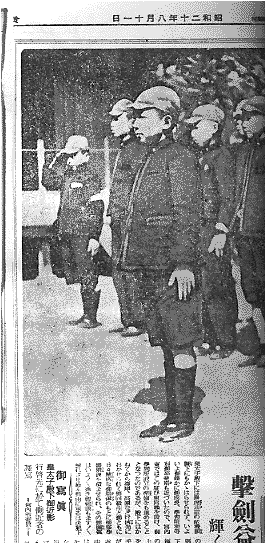 |
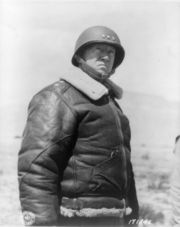 I wore pants having no fastener but buttons, when a little boy. In those days all the boys in Japan watched on TV drama 'Combat', in which officers wore jackets with zippers. The photo shows General Patton wearing such a jacket. Growing up, the fasteners became very popular. All of my winter overcoats attached such fasteners and I wore gym uniforms with a fastener in junior and high school. I think the fastener is one of the great US inventions.
I wore pants having no fastener but buttons, when a little boy. In those days all the boys in Japan watched on TV drama 'Combat', in which officers wore jackets with zippers. The photo shows General Patton wearing such a jacket. Growing up, the fasteners became very popular. All of my winter overcoats attached such fasteners and I wore gym uniforms with a fastener in junior and high school. I think the fastener is one of the great US inventions.Nihon no taisou-fuku
The photo shows Prown Prince wore no button IJN style uniform of Peers School in his childhood on Aug 1945. The article writes that Crown Prince does trainning of handling swords. His father Hirohito always wore a sword then.
Button
When Commdore Pery came to Kanagawa, some people in Edo were very curious about buttons and wanted them. Some US people exchanged buttons for something. I suppose this is the first commercial trade between Japanese people and US people. After half a century, Japan exported buttons in Europe.
Korekawa p.81
Body bag
Recently it happened to watch on TV, the documentary was about a US Army ER in Bagdad. After curring a heavily hurt soldier, a medic closed a fasener of a bag which contained the body of the soldier, it was impressive to me. I suppose bodies are enveloped in cloth or blankets with no fasteners even now in Japan.
Inch threads
Bolt is another kind of fasteners. Japan knew the screw while copying plugs of guns in 16th century. Japan imported modern screw manufacturing machines from UK in 19th century. So Japanese people began to make inch threads. IJA and IJN had thread standard separately, and main thread standard of aircraft engine was not unified until 1941. I asked Ogawa Seik about thread of a glow plug. He said, 'We had sold taps for working engine heads before. It is 1/4-32'. I asked a screw shop for a stock of the nuts. Sales did not know standard of UNEF at all. I wonder a car repair shop demands 500yen($4) for an inch nut or bolt. A Mini of UK hobbist worried about inch screws.
Eikoku-sha wo seikatu ni toriiretemitara
This page contains kanji characters.
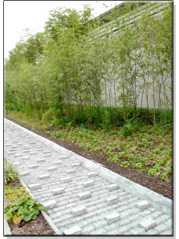
| 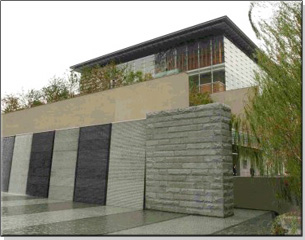 |
| Bamboo fence | Fall wall |
Bamboo grows well in the west of Japan. To see bamboo growing was curious for me, because I grew up in Hokkaido. Once Japan exported bamboo crafts, lantern, fan, skiing poles which were used in skiing troops of Finland etc.
Mussashi Edo-jyou
A Japanese professor of economics said, "There is four divisions of society at University of Tokyo. Law, medicine are upper. Economics, engineering are lower."
Certainly I was disappointed to Mr. Fukui's scandal of the Bank of Japan. A lots of Japanese professors have studied economics more than 100 years. Laurentzs of Nobel Prize in economics are Americans this year again.
Mr. Fukui's scandal
Money of the Wall Street broke challanging Germany, Japan and Soviet. But it seems their method has not worked in China and Vietnam well. If Leaders of Japan analyzed her economy in 1930s, the catastrophy would not bring out in 15 years later.
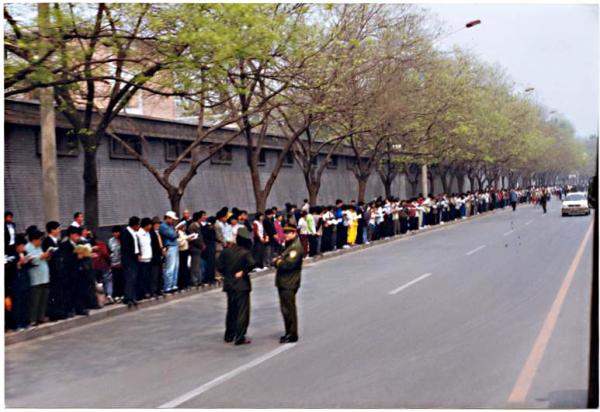 |
2 succesive top leaders of China are from ( �µ��� ) now. ( �븵��, ����, Ϸ��, ���) and ����� also were all from here. It is interesting. Principle of the nation is different from her outsiders ( �� ). US and other nations will always worry her politics in confused relations.
�����
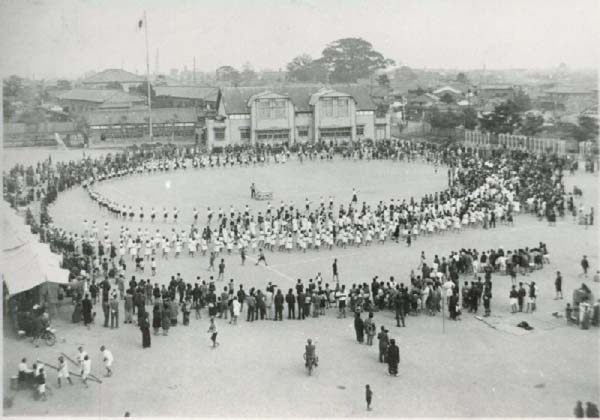 | 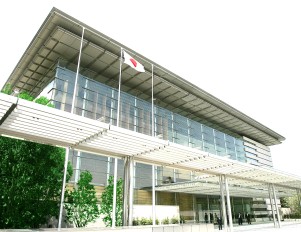 |
| A mast and gyms | Poles of Kantei |
Mikasa
However, the Kantei of Japan shows it low, and lower than the White House. And commons of Japan do not show our national flag, though we showed it on a natioanl holiday in 60s to 70s. While schools have been eager to build higher flag-towers for education now.
the White House
Education in an easy way
It reminds me of a holy facility in shools all over Japan. The ministry of education had tried to control mind of boys since Meiji era. At last IJN and IJA beaucrats and Education Ministry could bring up soldiers for suicide attacks. Teachers of Japan have liked uniform learning and training for a long time. It seems that this is an easier way for them to control boys in school. Teachers had better learn Fukuzawa's and Katsu's thought. Some teachers praised Great Leap Forward in China and Marxism when I was in high school. As a result, very few radical students appeared. And some of them became terrorists rather than revolutionalists. To teach was to propanga a dogma in Japan. I suppose Japanese teachers do respect authority in all times even now. Or we should change ourselves, should not we? Japanese people are uniform under freedom of individuals, while Chinese people are individual under control of rulers.
Great Leap Forward
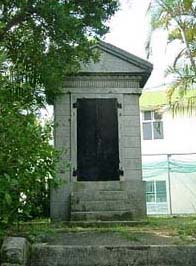 | 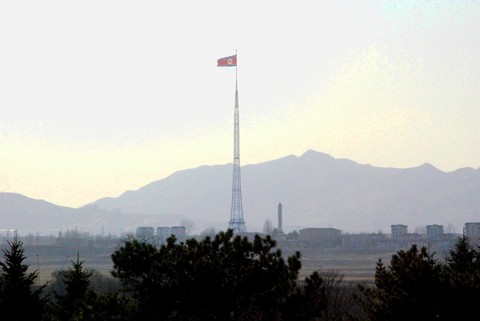 |
| Portraits' bank | The highest flag tower |
Confucianism
The left photo shows a proof of uniform controlled education. A small bank belonged to an elementary shool in Okinawa which contained photos of Mikado and a bible of Education ministry. Boys and girls had to bow it every passing. Teachers taught boys to be good soldiers for Mikado eager and eager. After the Pacific War, GHQ banned such education, teachers easily obeyed the order through Education Ministry. Japanese teachers always did respect to authority of Education Ministry. I remember climbing up it to play with other kids. I did not know it holy those days. Simply teachers have taught boys under the authority since 1868. They had no will either Mikado or GHQ. I said 'dogmatic' teachers in my high school days. The central dogma is Confucianism. The Confucianism is stick to our life, as it were air. IJN assigned commanders under Confucianism during the Pacifc War. USN was more efficient and reasonable for controlling the organization. How does weak confucian navy win against strong pragmatic navy?
People of Japan's neighbor have to show photos of her leaders at their home, I hear. The education of the nation may be extremely uniform and controlled as Japan did. The flag tower of the nation is the highest in the world. Once the naion was governed by the most Confucianism in the world.
Students
Japanese government sent students to China to learn her civilization. These are famous persons in history of Japan.Otherwise a lot of Chinese students came to Japan and learned modernization of Japan. Sonbun, Chiang Kai-shek and Zhou Enlai were famous among them. Sun Wen stayed here.
| Name | Kanji | Birth year/place | Death year/place |
| Genbo | ���� | ? | 746 |
| Abe no Nakamaro | - | 698 Yamato | 770 Choan |
| Kibi no Makibi | - | 695 | 775 |
| Saicho | - | 767 Oumi | 822 Hieizan |
| Kukai | - | 774 Sanuki | 835 Koyasan |
| Jyogyo | ��� | ? | 867 |
| Engyo | �߹� | 799 Kyoto | 852 |
| Ennin | �߿� | 794 Shimotuke | 864 |
| Eun | �ñ� | 798 Yamashiro | 869 |
| Enchin | ���� | 814 Sanuki | 89 |
| Syuei | ���� | 809 Kyoto | 884 |
| Eisai | - | 1141 Kibi | 1215 Kamakura or Kyoto |
| Dogen | - | 1200 Kyoto | 1253 Kyoto |
| Sesson Yubai | ��¼ͧ�� | 1290 | 1347 |
| Sesyu | - | 1420 Bicyu | 1502 |
| Kian Geiju | �˰ø��� | 1427 | 1508 |
Enchin went and came back by a merchant ship
In the end of Heian era, noble clans believed in amida-nyorai and saiho-jyodo. Sugawara no Michizane proposed not to send Imperial embassies to China in 894, because of Tang's domestic confusion, official expendture, and merchantizing route between Korea and Japan. In later, priests studied in private mission.
Syuei was Todaiji-betto, Toji-nicyojya
amida-nyorai and saiho-jyodo
Chinese priests thought deep and grew up zen, a kind of metaphysics. Dogen purified zen in Japanese simplified style, therefore his thought was very diffcult for me to understand. Heidegger knew Dogen's 'Uji' in 1920s. I prefer Heigegger's 'Sein und Zeit'.
| Name | Mother tongue | Birth — Death |
| Francisco de Xavier | Portuguese | Apr 7, 1506 - Dec 3, 1552 |
| Luis Frois | 1532 -July 8, 1597 | |
| Engelbert Kaempfer | German | Sep 16, 1651 - Nov 2, 1716 |
| Matthew Calbraith Perry | English | April 10, 1794 - Mar 4, 1858 |
| Philipp Franz von Siebold | Feb 17, 1796 - Oct 18, 1866 | |
| William S. Clark | English | Jul 31, 1826 - Mar 9, 1886 |
| Gottfried Wagener | Jul 5, 1831 - Nov 8, 1892 | |
| Edmund Morel | Nov 11, 1841 - Sep 23, 1871 | |
| Patrick Lafcadio Hearn | Jun 27, 1850 - Sep 26, 1904 | |
| Frank Lloyd Wright | Jun 8, 1867 - Apr 9, 1959 | |
| Douglas MacArthur | English | Jan 26, 1880 - Apr 5, 1964 |
| Helen Adams Keller | English | Jun 27, 1880 - June 1, 1968 |
| William Merrell Vories | English | Oct 28, 1880 - May 7, 1964 |
| Eugen Herrigel | Mar 20, 1884 - Apr 18, 1955 | |
| Ruth Benedict | English | Jun 5, 1887 - Sep 17, 1948 |
| Maximilian Kolbe | Polish | Jan 8, 1894����- Aug 14, 1941 |
| William Edwards Deming | English | Oct 14, 1900 - Dec 20, 1993 |
| Edwin Oldfather Reischauer | English | Oct 15, 1910 - Sep 1, 1990 |
| Edward George Seidensticker | English | Feb 11, 1921 - Aug 26, 2007 |
I found that Douglas MacArthur, Helen Adams Keller and
William Merrell Vories were born the same year in 1880. They were 24 years old, when the Japanese-Russo War was ceased.
Jazz
Interior Ministry of Japan banned selling Jazz records and playing Jazz as enemy music in 1943. Enemy words were translated into other words, for example rekodo(record)=onban. It was funny to rename record brands. Ministry of Education banned to teach English in middle school.- Polydor -> Daitoa(���찡)
- Colombia -> Nicchiku
- King -> Fuji(�ٻ�)
- Victor -> NihonOnkyo(���ܲ���)
Otherwise Japan did not ban Chinese songs, though both nations had been at war for 5 yeas. A Chinese composer made a song, titled Itu no hi ka kimi kaeru(When will you come home, ����������), was a big hit in Japan in 1940. Chiang Kaishek troop sang the tune on leaving for Taiwan, I heard. Both of Japanese and Chinese people loved it each other as Lili Marleen in the West.
Itunohi ka kimi kaeru, ����������)
Lili Marleen
Why did not Government ban a Chinese song but Jazz music and English words? Japan accepted Chinese culture for 500 years. But American culture was less than 100 years. It reminds me of ultra nationalism in 19th century. Spirits of bureaucrats were conservative same as in Edo era at the Pacific War. They disliked Western thought and adopted Western technologies only. Leaders of Japan forgot international law too, when Japan broke the Pacific War. Governers were afraid that commons knew Western thought. And commons did not believe government and its bureaucats. Bureaucrats ignored spirits of confidence, cooperation and love among societies of Japan. They thought people were uncivilized pesants, workers and soldiers only.
On the contrary, US were busy with learning Japanese for intelligence war. US bureaucrats were reasonable.
Jazz became very popular. Sometimes we listen to Jazz in BGM of Japanese TV drama or something. A TV program of Japan uses Blue note records now.
Culture rather than military
Newspapers told that we had better persuit culture than military power after the Pacific War. The word of culture, bunka (ʸ��) became a symbol of peace. Culture knife, 'bunka bouchou' (ʸ������), culture pan, 'bunka nabe' (ʸ����), culture house, 'bunka jutaku' (ʸ������) and culture broadcast, 'bunka housou', (ʸ������) appeared. The word 'culture' meaned simply non Japanese style for sale, as it were western or new taste. The culture broadcast was on air in 1953. It has a program titled culture restaurant, 'bunka shokudo', (ʸ����Ʋ).Hamamatsu-cho 1 chome bunka shokudo
bunka jyutaku
bunkanabe/kame jirushi
ORIENTAL KNIFE
santoku bunka bouchou
Why did ridiculous appearance happen? Japanese people remembered the modernization of Meiji. So we must do the 2nd civilization, 'bumei kaika' (ʸ������) of Japan like Meiji Restoration. We stopped 'fukoku kyouhei' (�ٹ�ʼ) on peace this time. We found military power gave no wealth. We also changed our nation name, dai nippon teikoku (Great Japanese Empire) into simple Nihon koku (Japan). By the way Japan called bunka (ʸ��) a peoriod of 1804 and 1807 year.
Empire of Japan
Chinese civilization
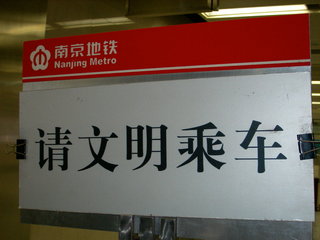 | 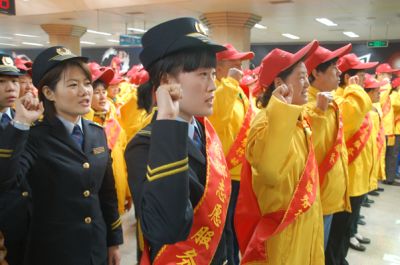 |
| Slogan in Nanjin | Volunteers for regulating |
Great Leap Forward
Wasei kango
Protest Meeting [���Ľ���]
 |
Omoiyari Yosan
Anti American movement [ȿ��Ʈ��]
US had governed Okinawa since Nimitz's declare on 26 Marcch 1945. Newspapers called [��������]. We often see [�Ʒ�����] in articles of Okinawa issue [��������]. US controlled mail in Okinawa till 1972.[2]��USN holds naval bases in Guam, Japan, Korea, Philippines[1], and Singapore now.
China adopted [��̳��ư] and [��������] after defeat of war on UK. In the conflict Chinese bureaucrats knew [�����ˡ]. China is one of nations in the world. Farmers were tired of heavy tax. Some people revolted and took part in [��ʿŷ��]. [���δ���] could not protect logistic line to Korea because of [Ϣ�����]. [��ˡ��ư] failed, but [��������] movement occurred. When Qing collapsed, local warlords were independent and foreign intervention occurred. Complicated conflict lasted for a long time. It was usual in Chinese history. Japan intervened and organized two or three puppet governments for 15 years. Japan was one of �� for her long history. [��̩���] is a key factor in China. The two [��̱��] and [������] survived in the conflict. The two armed parties ceased fires twice. They called it [���].
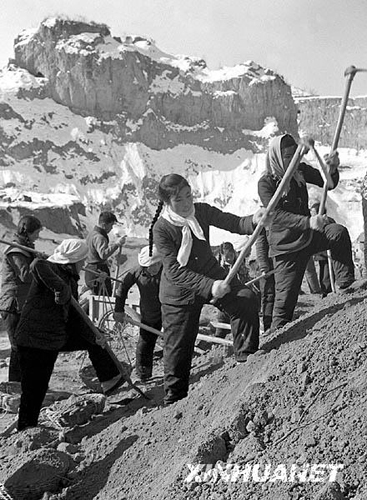 |
[2] Okinawa kitte
[3] Okinawan rape incident
English-Japanese dictionary
I always access an Japanese-English dictionary of internet. I don't understand 'article', 'preposition' well, though I learned English in junior-high and high school hard. So I sometimes read my English-Japanese dictionaries. One is old Kenkyusha's that was published in 1968. The other is Taishukan's. I found that they interest me to compare both example sentences.
| Word | Kenkyusha's | Daishukan's |
| body | a body of laws | the body of a speech |
| English England | The English are a law-abiding people. | England's armed intervention |
| gun | under the gun(s) | Gun Control Act of 1968 |
| horse | mount[ride] the high horse | get on one's horse |
| nation | a nation without a country Jews are people, not a nation, Russians are a nation, but not a single nation. | the Jewish nation |
| out | far out at sea | The fishing boats are 5km out. |
| right | All right! | It's time to leave, all right, but the bus hasn't come yet. |
| surrender | surrender of a fugitive | the surrender of the fortress |
| time | There is[I have] no time to lose. | Give me time to try again. |
| war | War often breaks out without warning. | Supposing War broke out, what would you do? |
| water | jump in(to) the water | The child had fallen in the water |
work like a horse : Ouini[genkini chujituni] hataraku Kenkyusha, basha-uma no youni[genkini] hataraku Daishukan
| Year | Leisure | Food | Housing | Appliance | Wear |
| 1996 | 36% | 15% | 25% | 3% | 2% |
| 2004 | 35% | 22% | 10% | 7% | 5% |
| Year | Person | Expenditure | Food | Housing | Power | Appliance | Wear | Healthcare | Communication | Education | Amusement | etc |
| 1994 | 3.47 | ¥333,840 | 24.1 | 6.1 | 5.9 | 3.9 | 6.3 | 2.9 | 9.8 | 4.7 | 9.9 | 26.4 |
| 2004 | 3.19 | ¥304,203 | 23.0 | 6.4 | 6.9 | 3.3 | 4.5 | 4.0 | 12.9 | 4.5 | 10.3 | 24.2 |
| Difference | 0.28 | -¥29,637 | -1.1 | 0.3 | 1.0 | -0.6 | -1.8 | 1.1 | 3.1 | -0.2 | 0.4 | -2.2 |
Japanese leisure population
How Japanese people spened their free time? The table shows leisure ranking in 2007, 2008 and 2009.[1][4] Playing cards, othello, karuta, hanafuda and video game, going on picnic and concert increased population more than 40% compared with last year. The red items ranked up yearly.
| Rank | 2007(H19) | 2008(H20) | 2009(H21) | |||
| 1 | Item | Item | Population | Item | Population | Increase |
| 1 | dining out | dining out | 7,370 | driving | 6,740 | +31.1% |
| 2 | tour | tour | 6,020 | tour | 6,390 | +6.1% |
| 3 | driving | driving | 5,140 | dining out | 6,370 | +23.9% |
| 4 | karaoke | lottery | 4,560 | cinema | 5,260 | +27.1% |
| 5 | rental video | PC | 4,470 | CD, FM, music | 5,150 | +30.1% |
| 6 | lottery | karaoke | 4,430 | zoo, auarium | 5,040 | +25.1% |
| 7 | zoo, auarium | rental video | 4,400 | rental video | 5,010 | +13.9% |
| 8 | PC | cinema | 4,140 | karaoke | 5,000 | +9.6% |
| 9 | cinema | zoo, auarium | 4,030 | lottery | 4,950 | +8.6% |
| 10 | CD, FM, music | CD, FM, music | 3,960 | video game | 4,720 | +43.0% |
| 11 | bar, pub | bar, pub | 3,310 | cards, othello | 4,440 | +52.6% |
| 12 | video game | video game | 3,300 | gardening | 4,030 | +23.6% |
| 13 | gardening | gardening | 3,260 | picnic | 3,690 | +49.4% |
| 14 | amusement park | cards, othello | 2,910 | concert | 3,560 | +47.1% |
| 15 | cards, othello | amusement park | 2,780 | bar, pub | 3,400 | +2.7% |
| 16 | picnic | jogging | 2,550 | learning | 3,390 | ? |
| 17 | bowling | picnic | 2,470 | amusement park | 3,160 | +13.7% |
| 18 | concert | concert | 2,420 | photo production | 3,120 | ? |
| 19 | come home | bowling | 2,350 | exhibition | 3,070 | ? |
| 20 | jogging | come home | 2,340 | excercise | 2,950 | ? |
Japanese monetary leisure market
Japanese monetary leisure market has shrunk since 1996. Although the leisure marked had shrunk at -1.40% through 1996 to 2002 yearly, it decreased -4.56% in 2009. Japanese men favored nomu (alcohol), utu (gamble) and kau (fuzoku), as one has told for a kong time. Most popular gambles are pachinko and horse race in Japan. The markets were ¥21,065 (30.3%) and 3,328 (4.8%) billion each in 2009.[6][8] Once Japanese men played sexual services with women. The market was ¥5,688.4 billion. The value might be written in a book by Kadokura.[7] The total of three amusement market was ¥30,081 billion. Therefore the rest of amusement market was ¥39,471 billion.
| Year | 1996(H8) | 2002(H14) | 2004(H16) | 2006(H18) | 2008(H20) | 2009(H21) |
| Billion ¥ | 90,907 | 83,229 | 81,272 | 79,174 | 72,876 | 69,552 |
| Incease ratio | - | -1.40% | -1.2% | -1.29% | -3.98% | -4.56% |
Alcohol
| Nation | Japan | US | UK | France | Korea | Malaysia |
| Morbidity | 2.25% | 5.48% | 6.42% | 4.54% | 13.10% | 3.74% |
| QTY [L] | <8 | <10 | <12 | <15 | <15 | <0.6 |
Cars, Magazines and Cosmetics
| Year | 2002 | 2011 | Ratio |
| Registered | 400 | 268.9 | -3.6% |
| Sold | 580 | 421.0 | -3.0% |
| 0.66L | 180 | 152.1 | -1.7% |
[1] �֥쥸�㡼���2010�פ˸���郎���;�ˤθ���
[2] �����ӤβȷסʻٽСˤο��
[3] ���������ˤ����ƤɤΤ褦���̤��Ϥ����줿���Ȼפ���
[4] �֥쥸�㡼���2009�פ˸���郎���;�ˤθ���
[5] WHO�������Υ��륳��������ݡ���2011��ȯɽ
[6] 2009ǯ�Υѥ��λ��ÿ���1720����
[7] ��¯���Ȥ�Ⱦʬ��ϥǥ�إ뤬���Ƥ���褦�Ǥ�
[8] ��塦���ÿ�����ư���

aboutMe
© 2007-2012 Enoki Sensor All Rights Reserved